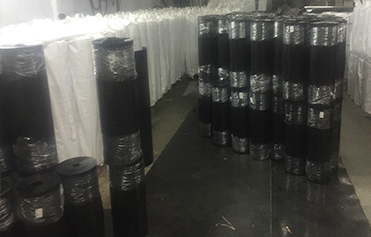In the realm of landscape architecture and construction, maintaining the delicate balance between natural beauty and structural integrity is a constant challenge. Root Barrier Sheet have emerged as a pivotal tool for professionals tasked with safeguarding both trees and infrastructure. These sheets are specifically designed to control root growth, preventing roots from encroaching on and damaging nearby structures like sidewalks, roads, and building foundations. By using Root Barrier Sheets, landscape architects and contractors can ensure that the growth of trees does not come at the expense of the surrounding infrastructure, making them an essential asset in modern landscaping projects.
Understanding the Functionality of Root Barrier Sheets
Root Barrier Sheets are typically made from durable materials such as HDPE (High-Density Polyethylene), which provides both strength and flexibility. These sheets act as a physical barrier, redirecting the growth of tree roots downward rather than outward. This redirection is crucial in preventing roots from lifting sidewalks, penetrating pipes, or causing other types of structural damage. The effectiveness of Root Barrier Sheets lies in their ability to blend seamlessly into the landscape while performing their protective function, making them a discreet yet powerful tool for any landscaping project.
HDPE Sheets: The Backbone of Root Barrier Technology
At the core of the effectiveness of Root Barrier Sheets is the use of HDPE Sheet. Known for their exceptional durability and resistance to various environmental factors, HDPE Sheets are a preferred choice for many applications in construction and landscaping. HDPE is resistant to moisture, chemicals, and UV rays, ensuring that the Root Barrier Sheets can withstand harsh conditions over extended periods. The flexibility of HDPE also allows these sheets to be installed in various configurations, making them adaptable to different project needs. This adaptability is especially important in complex landscaping projects where the terrain and root patterns can vary significantly.
The Role of Root Barrier Sheets in Tree Preservation
One of the key benefits of using Root Barrier Sheets is their ability to promote healthy tree growth while protecting infrastructure. By guiding roots away from critical areas, these sheets allow trees to mature without the risk of being removed due to potential damage to nearby structures. This is particularly important in urban environments where space is limited, and the coexistence of trees and infrastructure is essential. Landscape architects and contractors who prioritize the long-term health of both trees and structures find Root Barrier Sheets to be an indispensable component of their projects.
HDPE Sheets: Environmental Benefits and Sustainability
In addition to their functional benefits, HDPE Sheets offer significant environmental advantages. HDPE is fully recyclable, and its production has a lower environmental impact compared to other plastic materials. For landscape architects and contractors committed to sustainability, the use of HDPE-based Root Barrier Sheets aligns with eco-friendly practices. By choosing HDPE Sheets, professionals can contribute to reducing waste and promoting the use of materials that have a lesser impact on the environment, all while maintaining the highest standards of quality and performance.
Installation and Application of Root Barrier Sheets
The installation of Root Barrier Sheets is a straightforward process that requires careful planning and execution. The sheets are typically installed vertically around the root zone of the trees, with the depth depending on the species of the tree and the nature of the surrounding infrastructure. For large-scale projects, HDPE Sheets can be custom-cut to fit specific site requirements, ensuring comprehensive protection. Contractors often appreciate the ease of installation that comes with using HDPE-based Root Barrier Sheets, as it reduces labor costs and project timelines.
Long-Term Benefits of Using Root Barrier Sheets
The long-term benefits of using Root Barrier Sheets are manifold. They not only prevent immediate damage to infrastructure but also reduce maintenance costs over time. By curbing root-related damage, these sheets extend the lifespan of sidewalks, roads, and underground utilities, making them a cost-effective solution for municipalities and property owners. Moreover, the use of HDPE Sheets ensures that the Root Barrier remains effective for decades, providing a lasting solution to a common landscaping challenge.
Conclusion
Root Barrier Sheets, particularly those made from HDPE, have become essential tools for landscape architects and contractors looking to protect both trees and infrastructure. Their ability to guide root growth away from critical areas, combined with the durability and environmental benefits of HDPE Sheets, makes them a preferred choice for modern landscaping projects. As the demand for sustainable and long-lasting solutions in landscaping continues to grow, Root Barrier Sheets will undoubtedly play a pivotal role in shaping the future of urban and suburban landscapes. To explore more about the potential of these materials, visit plasticssheets.com.
